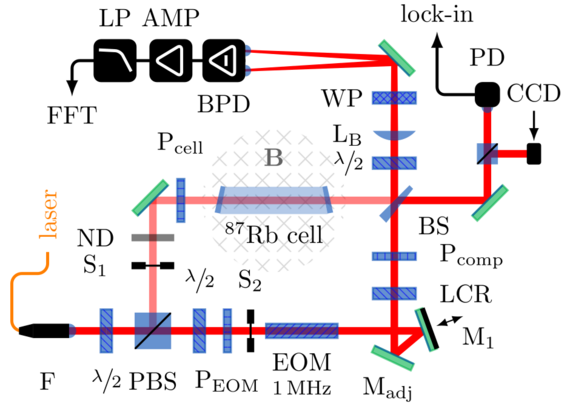In order to capture intrinsic dynamics of the most delicate systems, i.e. like single (InGa)As quantum dots, we find ourselves at a crossroads. On the one hand, any excess probe intensity drives these systems away from equilibrium thereby distorting the insights gained. On the other hand, for vanishingly low intensities our measurements are limited by the intrinsic detection noise. Even though we use state-of-the-art low noise photodetectors, only a poor signal-to-noise ratio is achievable.
Notwithstanding, a way to side-step this dilemma is to optically amplify the signal before it is even detected. In order to do so we borrowed a well-known technique from quantum optics, homodyne detection, and embedded it into detection schemes suitable for spin noise spectroscopy.
In our schemes the signal beam, on to which the desired signal (i.e. spin noise) was modulated, is allowed to interfere with a reference beam. This reference beam has the same photon energy and phase but is several magnitudes stronger in intensity compared to the signal beam. Through the effect of interference, the original modulation of the signal beam is amplified by the ratio of the intensities of the reference and the signal beams.
We first demonstrated the suitability of homodyne spin noise spectroscopy on a test system of spin noise spectroscopy: rubidium vapor. By artificially selecting adverse conditions we simulated the weak signal of a quantum dot and showed that we can still reach the optimal signal-to-noise ratio that is possible for classical light, .i.e., measurements limited only by the fundamental shot noise of photons.












Person of contact


30167 Hannover


